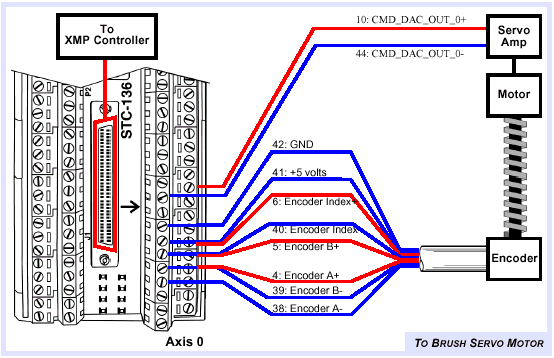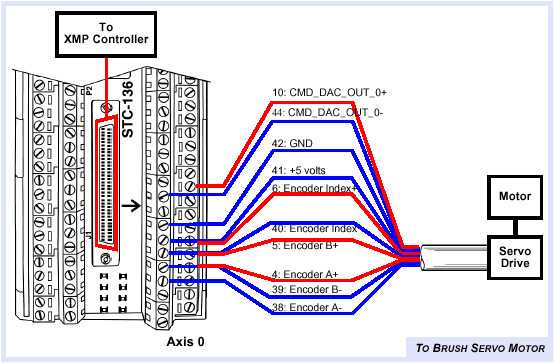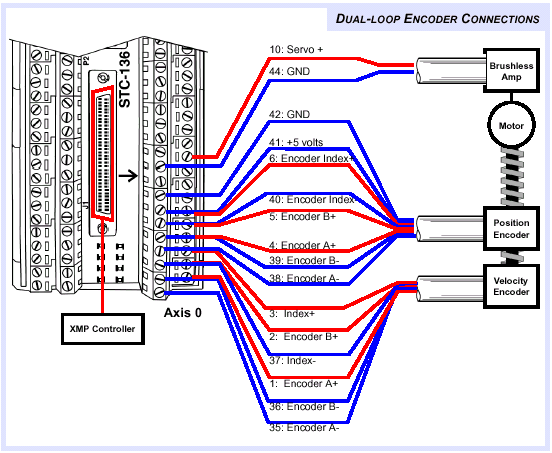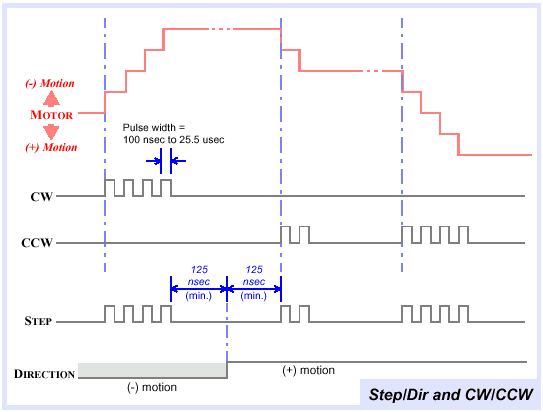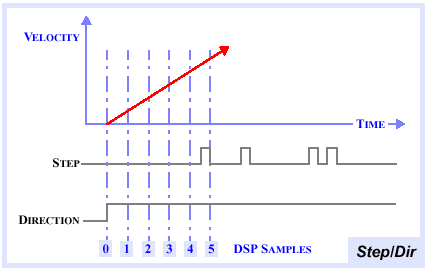| CHAPTER 3 Configuring An XMP-analog Motion Control System | ||||||||||||||||||||||||||||||||||||||||||||||||||||||||||||||||||||||
Configuring Analog ConnectionsThis section provides more general guidance for configuring analog controllers with various hardware (servo amps; encoders, etc.). XMP-PCI, XMP-CPCIConnections to Servo Motors
XMP-series controllers can control brush servo motors, brushless
servo motors, or linear brush/brushless motors. Basic connections
require an analog output signal (from the controller to the
amplifier) and an encoder input (from the motor to the controller).
Most amplifiers support either Velocity mode (voltage control) Torque mode (current control) or both. The XMP controller can be used with either servo motor/amplifier package.
Brush Servo Motors
The minimum required connections to brush-type servo are:
Analog signal Connections to Step MotorsOpen-loop Step MotorsXMP controllers can control step motors in open-loop (no feedback) configurations. The XMP can also be configured for STEP LOOPBACK. When this is enabled, the motor Position Error Limit and Axis Settling will depend on the output steps being read back into the actual position register. If STEP LOOPBACK is disabled, an external feedback device (e.g. encoder) will be needed for determining position error limits and axis settling. In either case, the output is generated regardless of actual position. Typical open-loop step motor connections for step drives triggering on the rising edge.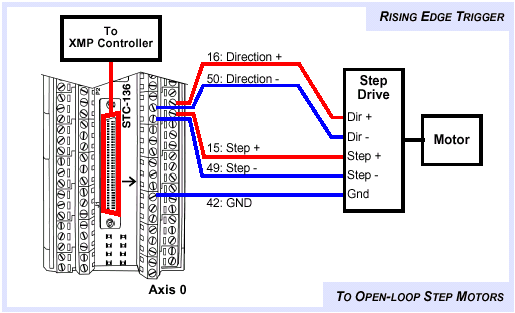
For stepper drives that trigger on the falling edge, invert the step output transceiver. This can be done from Motion Console by enabling the XCVR A: Invert (or XCVR B: Invert, etc.) parameter in the Motor Summary / I/O page. 
Connections for Dual-loop Control
XMP-series controllers can be configured for dual-loop control.
In dual-loop control, the velocity information for the
PID derivative term (Kd) is derived from a rotary encoder
on the motor shaft, and the position information
for the PID proportional and integral terms is derived from
an encoder on the load itself. The axis that will be used for the rotary encoder is configurable through software and can be any axis that is not controlling a motor. For example, if axis 0 is configured for velocity feedback and axis 1 is configured for positional feedback, your system would be connected as shown in the next figure. MPI Support for SteppersSupport for stepper motor control is included within the MPI (Motion Programming Interface). TransceiversAll transceiver and user I/O are part of the "Motor" object. Each hardware axis has three (3) transceivers dedicated to it, labeled XCVRA, XCVRB, and XCVRC. The XCVRA, XCVRB, and XCVRC transceivers support: Additionally, the A and B transceivers support more features than the C transceivers do: Note that only sensible XCVRA/XCVRB configurations are permitted. For example, if XCVRA is configured for Step, then XCVRB should be configured for Dir. If XCVRA is configured for Dir, then XCVRB should be configured for Step. Refer to the next table. Step/Dir & CW/CCW Specifications
The maximum separation between the Dir edge and the rising Step edge depends upon the sample rate and the commanded motion. A rule of thumb is that the Dir edge occurs at the start of the DSP's trajectory calculator (when the command velocity is non-zero), and the first Step occurs when the command position increments the first whole count. The time separation can be estimated from the commanded acceleration (Accel): 
For example, if acceleration is 100,000 cts/sec2, then the separation between the Dir edge and the first Step edge is 
which computes to Time = 4.5 milliseconds The minimum separation between the Dir edge and the first Step edge is 125 nanoseconds. Note that the XMP increments its counter on each rising edge of the Step or CW signal. Stepper Loopback When
the Loopback feature is enabled, the Step/Dir (or CW/CCW)
logic is routed back into the encoder inputs. Note that the
DSP doesn't use the feedback for control. There are two to
three samples of latency between when the DSP's command position
is updated and when the actual position (loopback) is updated.
Also, loopback is not affected by "inverted" configurations. The
position error limit is still valid for loopback operations.
If Loopback is not enabled, you can connect the encoder inputs
to actual encoders. HELPFUL TIP: Stepper loopback is very useful for motor simulation. When real servo motors are not available, the controller's stepper motor and loopback configurations make it possible to develop software. Closed Loop SteppersCurrently, there is no explicit support for closed loop stepper configurations. But, it is possible to correct the final position based on the actual position via application software, since the encoder inputs are valid with Step/Dir and CW/CCW configurations. | ||||||||||||||||||||||||||||||||||||||||||||||||||||||||||||||||||||||
